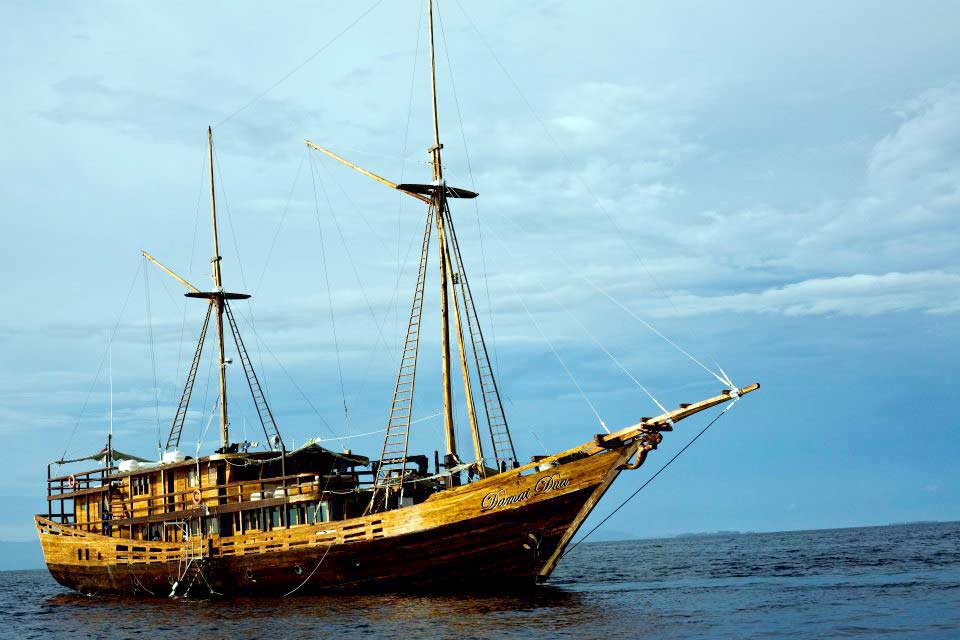Komodo National Park (UNESCO World Heritage Site) is one of Indonesia’s most famous dive destinations and with good reason. It has an amazing variety of dive sites offering something for everyone. From high voltage dives with Sharks and hunting pelagic fish to amazing dives with congregating Mantas and of course macro dives with a diverse range of critters. It also has the greatest surface interval of any dive destination with a visit to Rinca Island to see the Komodo Dragons!
Castle Rock and Crystal Rock are probably the two most famous dive sites in Komodo. Located in North Komodo they are two of Komodo’s high voltage dives. The stars of the show are often the big Grey Reef Sharks and Whitetip Sharks hanging out at the drop off, accompanied by lots of Giant Trevally chasing bait balls and normally a few Napoleon Wrasse adding to the big fish show! The sheer perfusion of fish life at these dive sites is some of the best you will see in all of Indonesia. Batu Bolong is another of Komodo’s big fish, high-action dive sites. Again Sharks feature high on the bill, as do many of the other schooling pelagic fish – Trevally, Tuna, Barracuda – expect to see them all in big numbers, along with huge schools of Rainbow Runners. It’s not all big fish action though – Batu Bolong is also one of Komodo’s best sites for Turtles. To the North of Batu Bolong are the dive sites of Tatawa Kecil and Tatawa Besar. Most people prefer Tatawa Kecil as it is a fishier dive. At Tatawa Kecil you can expect lots of fish but generally less pelagic action than at Batu Bolong. Batfish, groups of big Sweetlips and Snapper, as well as many smaller fish, make this dive site fish soup! Moving down to the South coast of Komodo there are more excellent dives sites. Top on the list for most divers is Manta Alley – of course the highlight here is the Manta Rays! Mantas can also be seen at other sites in Komodo but Manta Alley is the most reliable. Another great dive in South Komodo is the small Phinisi wreck in Loh Sera Bay. We recommend diving this site twice, once during the day and again for a night dive. There’s lots of fish life around the wreck, as well as Banded Sea Snakes and plenty of macro life clung to the wreck itself. Komodo National Park comprises not just Komodo Island but also the neighbouring island of Rinca. For divers South Rinca offers some great macro diving which really adds to the underwater diversity of Komodo National Park. The three most famous sites are Cannibal Rock, Banana Island and Yellow Wall. At these sites expect to find lots and lots of different types of Nudibranch, Shrimps and Crabs, Cuttlefish, Frogfish, and Pygmy Seahorse. Of course no visit to Komodo is complete without a trip to see the Komodo Dragons. These trips normally take place during one of your surface intervals and are normally on Rinca Island. This is likely to be the best surface interval of your life! One thing that most people notice in Komodo is that the islands are much drier than in other areas of Indonesia and on your Rinca tour you could be forgiven for feeling more like you are on an African plain than a tropical island. Do not be deceived though, these islands are rich in fauna and other animals you may encounter during your tour are Snakes and Wild Deer.





















